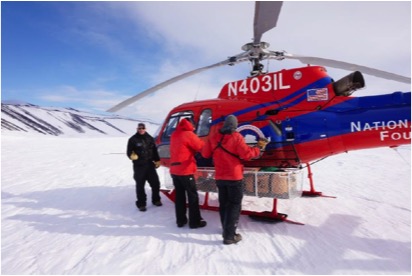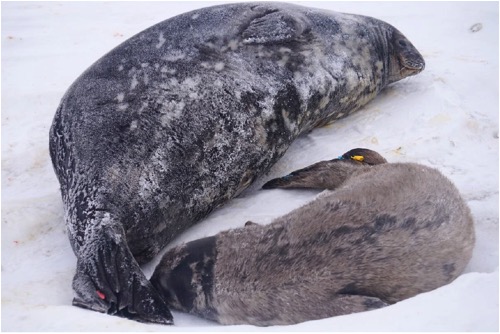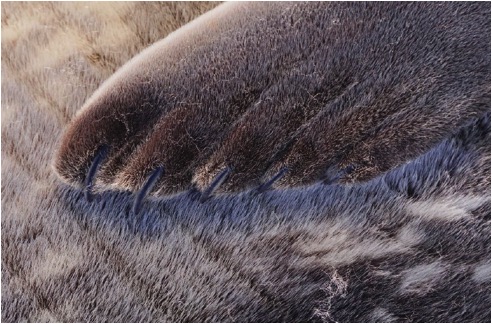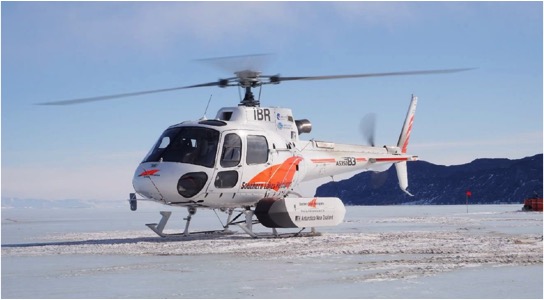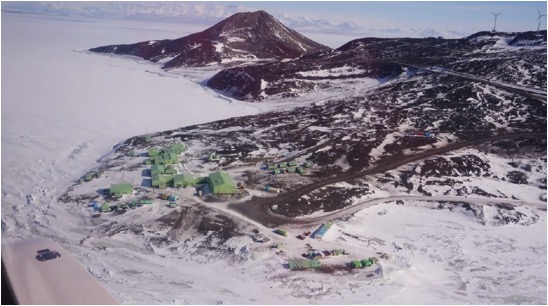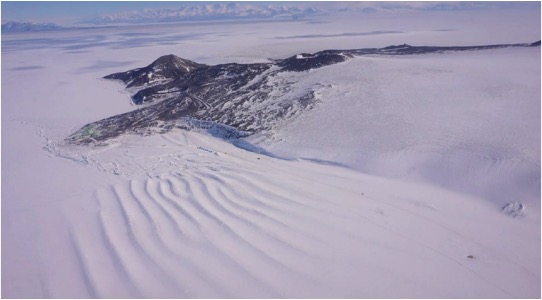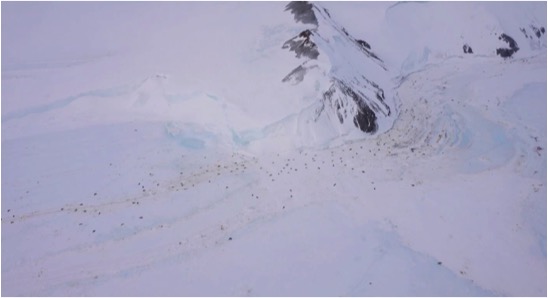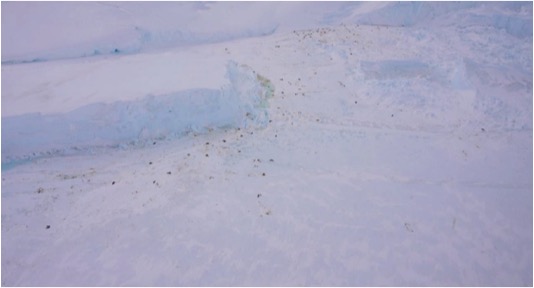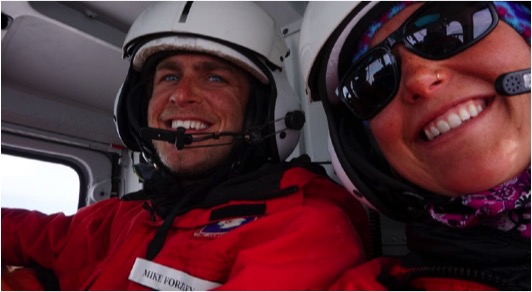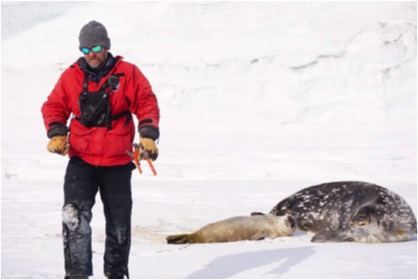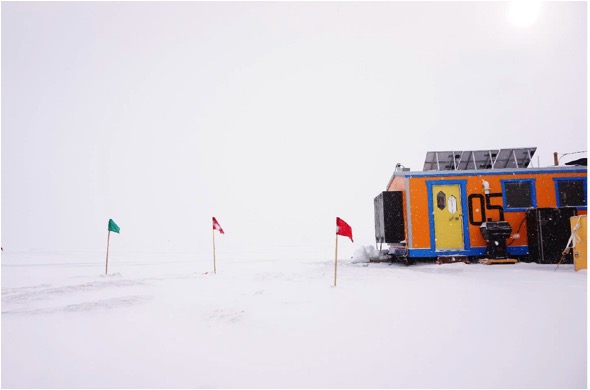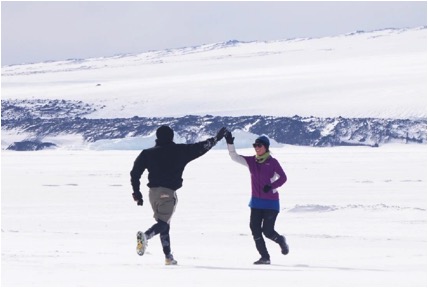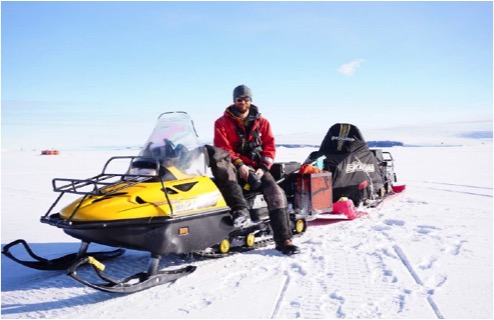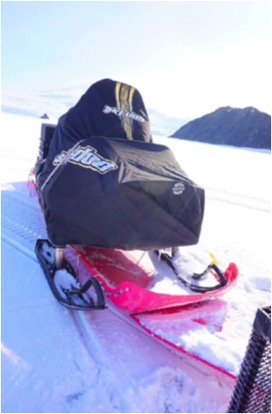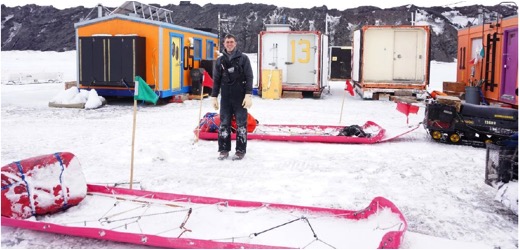The sixth post in the Antarctica: Weddell Seal Team series comes to us from Erika Nunlist.
If you haven’t yet, be sure to read the first post in this series for more background on the project and the team. You can also read the 2nd, 3rd, 4th, and 5th posts if you missed them.
If you would like to help support this project, head on over to their campaign on Experiment! They only have 4 days left to reach their goal!
The Ice life
November 25, 2015
Life and work are still moving right along down here on the ice. We only have about three weeks left which seems absolutely crazy. I can’t believe it’s been going so fast!
First off, I had a question from someone asking ‘what is the overall objective of this project and how is it going?’ I’ve been caught up in the day-to-day activities so maybe I should take a step back for a second and briefly say a little more about the project as a whole.
The overall objective of this project is to study the long term population trends of Weddell seals. This project has been going on since the 1960’s which presents a unique opportunity to look at multi-generational data on a population of large mammalian carnivores. The oldest seal the project has had so far was 31! She was here last year but didn’t return. I believe the project has documented her with 23 pups, some of which have already had their own pups. She had her first pup in 1990, and only took 1993, 2010 and 2011 from having pups. This is an extreme case though and most of our pup moms are between 10 and 18 years old with many fewer pups to their name. Just an interesting history on an individual to help give you a sense of the information we can get out of the data this project collects!
Our short term or seasonal objective is to work hard, document all the animals in our study area, tag all the pups, and stay happy and healthy!
As our pups get older, they start to molt their ‘lanugo’ fur in favor of their adult pelage. They can have some interesting and comical molt patterns. This guy with his mohawk reminds of some kid out of an inner city punk rock band.
Another photo of the same pup with his mom. Notice her red tags and his yellow temp tag and blue normal tags. Both their tags allow us to document their association. You can also see the pup’s splotchy molting pattern again.
One thing I was surprised with was that the seals have claws. They aren’t very sharp and kind of look like dog claws. What I’ve seen the claws used for is traction on ice and scratching themselves. The molting pups especially scratch themselves a lot. Must be pretty itchy molting all that fur!
I’ve been up in a helicopter two more times recently. Both were attempts to get to an isolated seal colony. One of the flights was abandoned because there was too much wind at our destination, the second attempt was successful. More on that later. Our first flight was commissioned out to the New Zealand base, or the kiwis. This is a photo of the kiwi AStar-B2 helicopter picking us up at our camp.
We had to bail on our first flight out to White Island, where the remote seal colony is, but we did a reconnaissance flight instead. This is a shot of the kiwi base as we flew over. McMurdo is just on the other side of the wind turbines you can see in the top right.
Sea ice and multi-year ice can be under a lot of pressure and can have some interesting shapes. This is actually a picture of ice on the ice shelf (which is a floating glacier – very different from sea ice) under pressure just outside Scott Base in the shape of large ‘rollers’. I think they look like something you might see in a desert but formed entirely differently.
A view from the helicopter of one of our larger colonies at Hutton Cliffs. We had a lot of pups born here this year. Every other day we walk the entire colony and check every individual. This photo covers around a mile left to right.
Another aerial view of one of our colonies – this one is called North Base.
Mike and I in the kiwi helicopter.
On our second attempt to White Island, we had a AStar-B2 helicopter out of McMurdo. You can see John, our pilot, enjoying himself. Often the pilots just fly and don’t get the opportunity to get out and walk around. He went with us to check out the seals. This picture also shows Mike and Terril putting our gear in the carrying cage.
White Island is unique and very interesting for multiple reasons. First off, it is the most southern mammalian resident population in the world. It is also an isolated population very few individuals – last year our project saw less then 20 seals. This small population was isolated due to an event in the middle of the last century when the ice shelf broke out unusually far allowing a small subset of the seals to be trapped afterwards. The seals themselves didn’t seem to different to me, but apparently (and obviously) they are very inbred. One interesting side-effect apparently might be more female pups born than usual. No clue as to why, but an interesting observation non-the-less.
I’ve had some questions on the weather we experience down here. I have to say, it really hasn’t been that bad. We had some colder, windier days to start the season off but since then we’ve had a lot of beautiful days. Recently, the temperature has been steadily climbing. Lately it’s been in the low 20’s which is warmer than places in the states! James told me it was around -10 degrees F in couple nights ago in the Centennial Valley which was about 30 degrees colder than it was here when we were talking. This is a photo of one day that the weather wasn’t good enough to work in. It was snowy, windy, and low visibility.
Later that same day we hadn’t been able to work, it cleared up into beautiful day. Sound like a familiar weather pattern for any of you living in Montana? We didn’t end up working that day even when it did clear up so we had some free time. Running is another thing that some of us do when we have the energy and time. This is a photo of Kaitlin running back from Little Razorback – around 1.2 miles from camp. Each of those bamboo flags are 50 meters apart for some depth perception. There’s also another out and back that adds up to 3 miles round trip. If you add both out-and-backs you have a nice 5+ mile run.
Terrill and Kaitlin ‘hi-fiving’ in front of camp. They both did the same run but in different directions. Good way to blow off some steam and enjoy Antarctica when you’re not working! Our crew plans on doing the Turkey Trot for Thanksgiving in a few days, excited for that!
We routinely drive our sleds around on rough terrain. Because of this, we have had multiple sleds break down on us. Mostly its our suspension systems breaking because of all the ‘streugy’ (rough icy molgul features on the ice) we drive over. When a sled does break, it’s a pretty painless routine. We put the sled on one of our siglands and tow it with another sled back to McMurdo. In McMurdo we have great mechanics that seem to be able to fix anything. Usually we’ll have our sleds back in a day or two depending on their work load. These are pictures of one of the broken down sled scenario.
Mike getting the gear together in the morning.
Eric on a survey of another colony we call South Base.
Blueberry peach pie from scratch with our event number. Pretty tasty!
No rolling pins around here, had to make due with a Coors Light can. Worked out great! Photo by Ross.
Our first adelie penguin! We haven’t had any more emperors lately, but we have had loner adelies run through camp, yes literally run. They are just as curious as the emperors but less comfortable hanging around.
One afternoon when we finished work early we went to check out a snow cave about 10 minutes away from camp. Here’s Ross with sunglasses and a headlamp – an unusual combination around here!
Mike entering the snow cave.
Inside the snow cave. Photo by Ross.
Icicles in the snow cave.
B-009. First time fooling around with light painting. Cursive by Kaitlin with a headlamp!
Kaitlin and Mike in another, shallower, snow cave (thus the brighter blue background).
Looking up into a crevasse. So beautiful!
Hope everyone enjoyed the update!
-Erika
Thanks for reading!
Stay tuned for the seventh and last post in the series, coming tomorrow!
If you would like to help support this project, head on over to their campaign on Experiment! They only have 4 days left to reach their goal!
Share this: